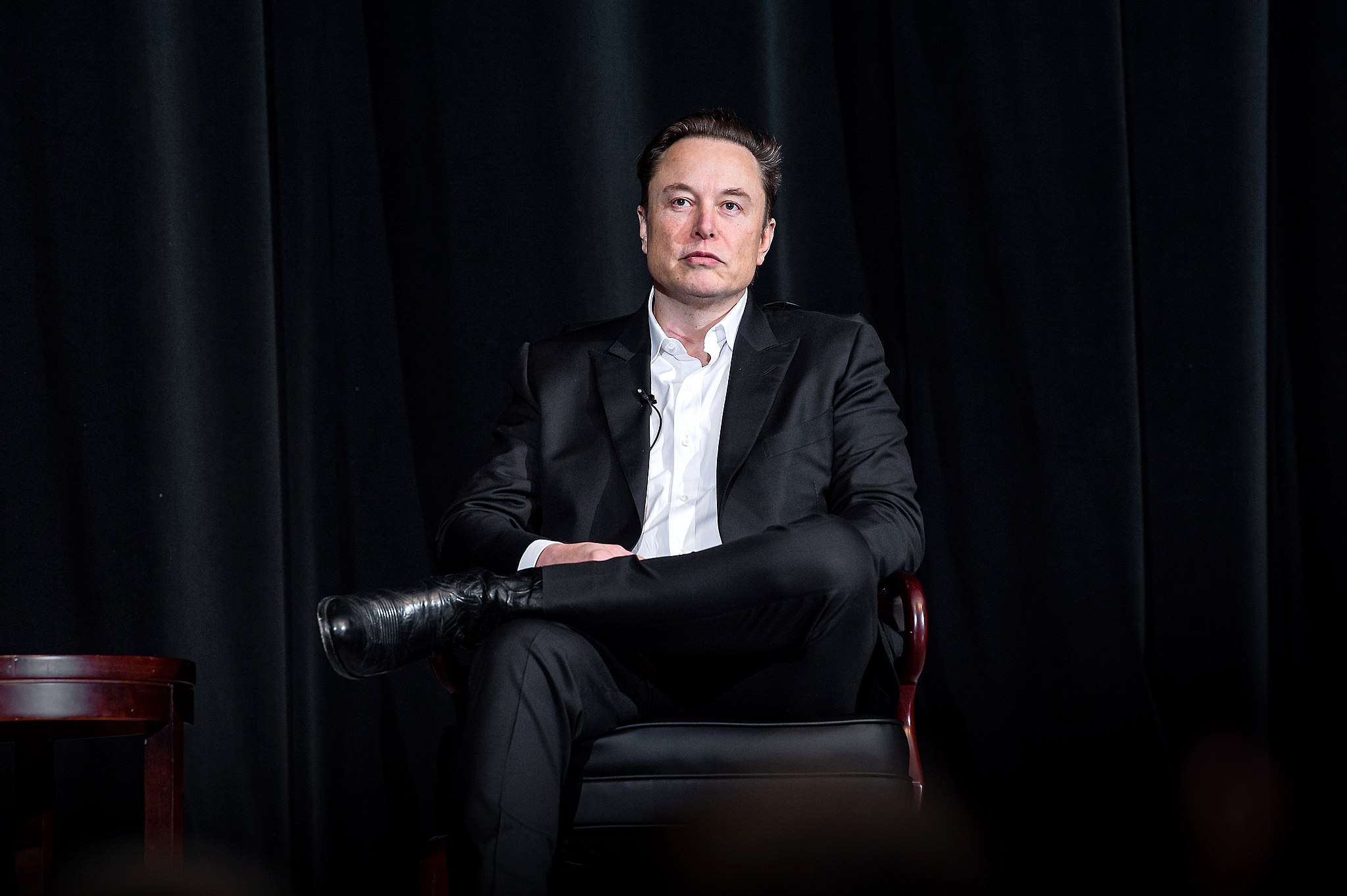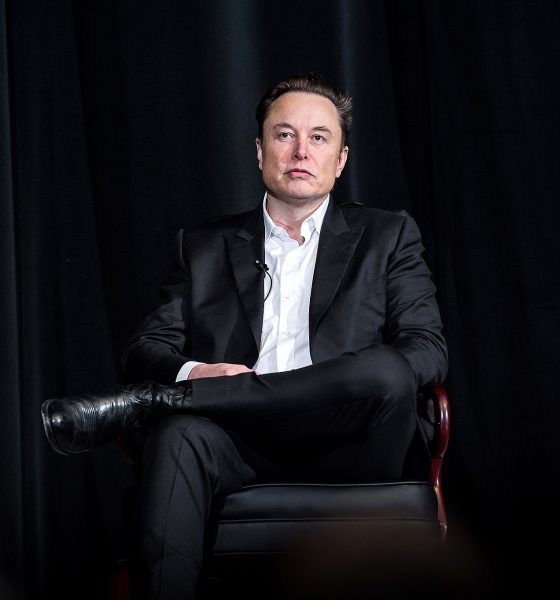

News
“Elon Musk provision:” CA ponders wealth tax–even for those who moved out of state
California legislators are advocating for legislation that would introduce a new tax on the state’s wealthiest residents, even if they have already relocated to another area of the country. The bill was introduced by Assemblyman Alex Lee, a progressive Democrat in the California State Legislature.
Lee’s bill would impose an additional annual 1.5% tax on individuals with a “worldwide net worth” over $1 billion, beginning as early as January 2024. As early as 2026, the bill’s threshold would drop, as individuals with a worldwide net worth over $50 million would also be hit with a 1% annual tax on wealth. Lee estimates that the proposal could raise about $22 billion in new revenue for the state.
In a post on Twitter, Lee noted that the bill is a way for the ultra-rich to pay their fair share. “The working class has shouldered the tax burden for too long. In CA, we’ve introduced #ACA3 + #AB259 to tax the ultra rich & invest in all Californians. The ultra rich are paying little to nothing by hoarding their wealth through assets. Time to end that,” Lee wrote in a post.
While exit taxes are not new in California, the bill includes provisions to create contractual claims tied to the assets of wealthy taxpayers who are unable to pay their annual wealth tax bill because the majority of their assets are not easily converted to cash. The bill would then require annual filings with the California Franchise Tax Board so the individuals can pay the wealth taxes they owe, even if they have already relocated to another state.
Steve Boultbee, a tax partner at Marcum LLP in San Francisco, told the San Francisco Business Times that the proposed tax appears to be a way to discourage residents of California from relocating to another state, especially before an initial public offering or other liquidity events. Boultbee noted that individuals such as Tesla CEO Elon Musk could be affected by the bill.
“You’re gonna have to have left four years before, or they’re going to conceivably get you for something. My first thought is that this could be an ‘Elon Musk provision’ since he moved to Texas,” the tax partner said.
Supporters of the legislation have argued that the funds it could collect from the state’s wealthiest could provide funding for key programs, such as schools, housing, and other social initiatives. Experts, however, have argued against the bill. Jared Walczak, vice president of state projects at Tax Foundation, noted in a statement to Fox News Digital that the bill would actually damage the state’s economy.
“The proposed California wealth tax would be economically destructive, challenging to administer, and would drive many wealthy residents — and all their current tax payments — out of state. The bill sets aside as much as $660 million per year just for administrative costs, more than $40,000 per prospective taxpayer, giving an idea of how difficult such a tax would be to administer.
“A wealth tax could be particularly destructive in California, home to so many tech startups, because the owners of promising businesses could be taxed on hundreds of millions of dollars’ worth of estimated business value that never actually materializes. Very few taxpayers would remit wealth taxes, but many taxpayers would pay the price,” Walczak added.
Patrick Gleason, vice president of state affairs at Americans for Tax Reform, also told the publication that the bill’s system to “get around” the problem of the wealthy leaving California by trying to “tax people even after they leave the state” is questionable at best, or unconstitutional at worst. It should be noted that previous studies have demonstrated that the top 1% of taxpayers in states such as New York and California actually contribute approximately 50% of state income taxes, just as highlighted by individuals such as Elon Musk in the past.
According to Forbes’ 2022 World’s Billionaires list, California remains home to the most billionaires in the country, with 186 living in the state. This is a decrease from the previous year’s count of 189. Despite this, several companies, such as McKesson, Oracle, Tesla, and Charles Schwab, have relocated their headquarters to Texas in recent years.
Don’t hesitate to contact us with news tips. Just send a message to simon@teslarati.com to give us a heads up.

Elon Musk
Starlink passes 9 million active customers just weeks after hitting 8 million
The milestone highlights the accelerating growth of Starlink, which has now been adding over 20,000 new users per day.

SpaceX’s Starlink satellite internet service has continued its rapid global expansion, surpassing 9 million active customers just weeks after crossing the 8 million mark.
The milestone highlights the accelerating growth of Starlink, which has now been adding over 20,000 new users per day.
9 million customers
In a post on X, SpaceX stated that Starlink now serves over 9 million active users across 155 countries, territories, and markets. The company reached 8 million customers in early November, meaning it added roughly 1 million subscribers in under seven weeks, or about 21,275 new users on average per day.
“Starlink is connecting more than 9M active customers with high-speed internet across 155 countries, territories, and many other markets,” Starlink wrote in a post on its official X account. SpaceX President Gwynne Shotwell also celebrated the milestone on X. “A huge thank you to all of our customers and congrats to the Starlink team for such an incredible product,” she wrote.
That growth rate reflects both rising demand for broadband in underserved regions and Starlink’s expanding satellite constellation, which now includes more than 9,000 low-Earth-orbit satellites designed to deliver high-speed, low-latency internet worldwide.
Starlink’s momentum
Starlink’s momentum has been building up. SpaceX reported 4.6 million Starlink customers in December 2024, followed by 7 million by August 2025, and 8 million customers in November. Independent data also suggests Starlink usage is rising sharply, with Cloudflare reporting that global web traffic from Starlink users more than doubled in 2025, as noted in an Insider report.
Starlink’s momentum is increasingly tied to SpaceX’s broader financial outlook. Elon Musk has said the satellite network is “by far” the company’s largest revenue driver, and reports suggest SpaceX may be positioning itself for an initial public offering as soon as next year, with valuations estimated as high as $1.5 trillion. Musk has also suggested in the past that Starlink could have its own IPO in the future.
News
NVIDIA Director of Robotics: Tesla FSD v14 is the first AI to pass the “Physical Turing Test”
After testing FSD v14, Fan stated that his experience with FSD felt magical at first, but it soon started to feel like a routine.

NVIDIA Director of Robotics Jim Fan has praised Tesla’s Full Self-Driving (Supervised) v14 as the first AI to pass what he described as a “Physical Turing Test.”
After testing FSD v14, Fan stated that his experience with FSD felt magical at first, but it soon started to feel like a routine. And just like smartphones today, removing it now would “actively hurt.”
Jim Fan’s hands-on FSD v14 impressions
Fan, a leading researcher in embodied AI who is currently solving Physical AI at NVIDIA and spearheading the company’s Project GR00T initiative, noted that he actually was late to the Tesla game. He was, however, one of the first to try out FSD v14.
“I was very late to own a Tesla but among the earliest to try out FSD v14. It’s perhaps the first time I experience an AI that passes the Physical Turing Test: after a long day at work, you press a button, lay back, and couldn’t tell if a neural net or a human drove you home,” Fan wrote in a post on X.
Fan added: “Despite knowing exactly how robot learning works, I still find it magical watching the steering wheel turn by itself. First it feels surreal, next it becomes routine. Then, like the smartphone, taking it away actively hurts. This is how humanity gets rewired and glued to god-like technologies.”
The Physical Turing Test
The original Turing Test was conceived by Alan Turing in 1950, and it was aimed at determining if a machine could exhibit behavior that is equivalent to or indistinguishable from a human. By focusing on text-based conversations, the original Turing Test set a high bar for natural language processing and machine learning.
This test has been passed by today’s large language models. However, the capability to converse in a humanlike manner is a completely different challenge from performing real-world problem-solving or physical interactions. Thus, Fan introduced the Physical Turing Test, which challenges AI systems to demonstrate intelligence through physical actions.
Based on Fan’s comments, Tesla has demonstrated these intelligent physical actions with FSD v14. Elon Musk agreed with the NVIDIA executive, stating in a post on X that with FSD v14, “you can sense the sentience maturing.” Musk also praised Tesla AI, calling it the best “real-world AI” today.
News
Tesla AI team burns the Christmas midnight oil by releasing FSD v14.2.2.1
The update was released just a day after FSD v14.2.2 started rolling out to customers.

Tesla is burning the midnight oil this Christmas, with the Tesla AI team quietly rolling out Full Self-Driving (Supervised) v14.2.2.1 just a day after FSD v14.2.2 started rolling out to customers.
Tesla owner shares insights on FSD v14.2.2.1
Longtime Tesla owner and FSD tester @BLKMDL3 shared some insights following several drives with FSD v14.2.2.1 in rainy Los Angeles conditions with standing water and faded lane lines. He reported zero steering hesitation or stutter, confident lane changes, and maneuvers executed with precision that evoked the performance of Tesla’s driverless Robotaxis in Austin.
Parking performance impressed, with most spots nailed perfectly, including tight, sharp turns, in single attempts without shaky steering. One minor offset happened only due to another vehicle that was parked over the line, which FSD accommodated by a few extra inches. In rain that typically erases road markings, FSD visualized lanes and turn lines better than humans, positioning itself flawlessly when entering new streets as well.
“Took it up a dark, wet, and twisty canyon road up and down the hill tonight and it went very well as to be expected. Stayed centered in the lane, kept speed well and gives a confidence inspiring steering feel where it handles these curvy roads better than the majority of human drivers,” the Tesla owner wrote in a post on X.
Tesla’s FSD v14.2.2 update
Just a day before FSD v14.2.2.1’s release, Tesla rolled out FSD v14.2.2, which was focused on smoother real-world performance, better obstacle awareness, and precise end-of-trip routing. According to the update’s release notes, FSD v14.2.2 upgrades the vision encoder neural network with higher resolution features, enhancing detection of emergency vehicles, road obstacles, and human gestures.
New Arrival Options also allowed users to select preferred drop-off styles, such as Parking Lot, Street, Driveway, Parking Garage, or Curbside, with the navigation pin automatically adjusting to the ideal spot. Other refinements include pulling over for emergency vehicles, real-time vision-based detours for blocked roads, improved gate and debris handling, and Speed Profiles for customized driving styles.








